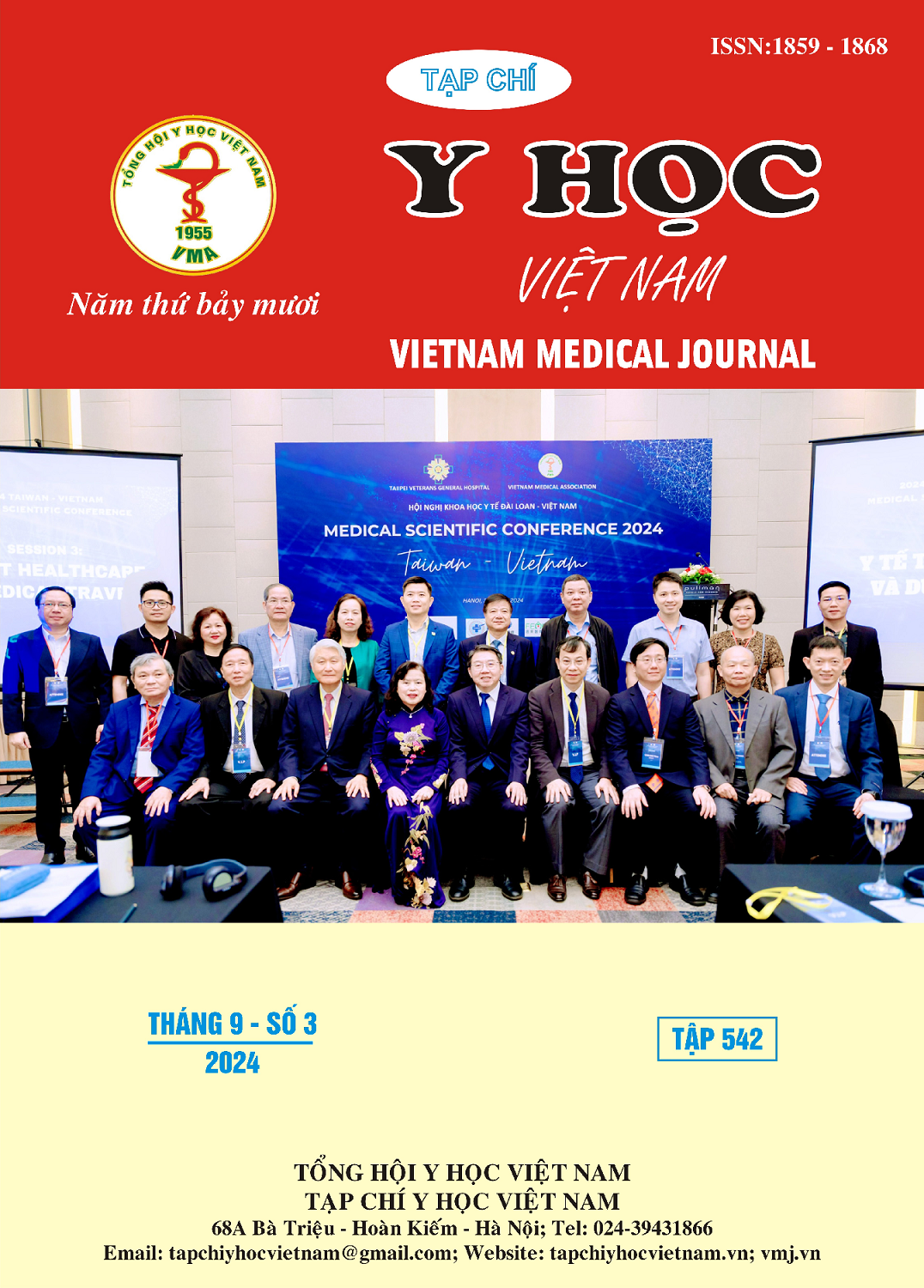TẦN SUẤT CÁC BIẾN THỂ ĐA HÌNH ĐƠN NUCLEOTIDE RS17501010, RS9290927, RS893051, RS9290929 TRÊN GEN CLDN-1 LIÊN QUAN VỚI BỆNH VIÊM DA CƠ ĐỊA
Nội dung chính của bài viết
Tóm tắt
Giới thiệu: Bệnh viêm da cơ địa (VDCĐ) là một bệnh lý phức tạp đa yếu tố, trong đó sự phối hợp giữa yếu tố hàng rào bảo vệ da và yếu tố di truyền đóng vai trò quan trọng. Các biến thể đa hình đơn nucleotide (SNP) trên gen CLDN-1 mã hóa protein claudin-1 đã được mô tả liên quan đến bệnh sinh của bệnh VDCĐ. Thông tin về tỉ lệ kiểu gen của biến thể này với bệnh VDCĐ chưa được khảo sát trên người Việt Nam trưởng thành. Mục tiêu: Xác định tỉ lệ của các SNP rs17501010, rs9290927, rs893051 và rs9290929 trên gen CLDN-1 ở bệnh nhân VDCĐ. Đối tượng và phương pháp nghiên cứu: Nghiên cứu mô tả loạt ca xác định tỉ lệ kiểu gen và tần suất alen của 4 biến thể rs17501010, rs9290927, rs893051 và rs9290929 trên 82 người bệnh trưởng thành mắc VDCĐ bằng phương pháp giải trình tự Sanger. Kết quả: Trong 82 người thoả tiêu chuẩn tham gia nghiên cứu, nam chiếm 59,76%, tuổi trung vị là 36 tuổi. Đối với rs17501010, tỉ lệ alen G là 95,73%, T là 4,27%. Tỉ lệ kiểu gen lần lượt là GG: 91,46%, GT: 8,54%. Đối với rs9290927, tỉ lệ alen A là 50,61%, T là 49,39%. Tỉ lệ kiểu gen lần lượt là AA: 26,83%, AT: 47,56%, TT: 25,61%. Đối với rs893051, tỉ lệ alen C là 71,95%, G là 28,05%. Tỉ lệ kiểu gen lần lượt là CC: 54,88%, CG: 34,15%, GG: 10,98%. Đối với rs9290929, tỉ lệ alen A là 91,46%, G là 8,54%. Tỉ lệ kiểu gen lần lượt là AA: 82,93%, AG: 17,07%. Kết luận: Đã xác định được tỉ lệ kiểu gen và tần suất alen của 4 SNP trên gen CLDN1 ở người bệnh trưởng thành mắc VDCĐ điều trị tại Bệnh viện Da Liễu TP HCM, tạo tiền đề để có thể thực hiện các nghiên cứu tiếp theo nhằm xác định vai trò của các biến thể này đối với bệnh VDCĐ và ứng dụng kết quả góp phần quản lí hiệu quả hơn bệnh VDCĐ ở Việt Nam.
Chi tiết bài viết
Từ khóa
Viêm da cơ địa, gen CLDN-1, biến thể rs7501010, rs9290927, rs893051, rs9290929.
Tài liệu tham khảo
2. Zink AGS, Arents B, Fink-Wagner A, et al. Out-of-pocket Costs for Individuals with Atopic Eczema: A Cross-sectional Study in Nine European Countries. Acta dermato-venereologica. Mar 1 2019;99(3):263-267. doi:10.2340/00015555-3102
3. Gruber R, Börnchen C, Rose K, et al. Diverse Regulation of Claudin-1 and Claudin-4 in Atopic Dermatitis. The American journal of pathology. 2015/10/01/ 2015;185(10):2777-2789. doi:https://doi.org/10.1016/j.ajpath.2015.06.021
4. Kim J, Kim BE, Leung DYM. Pathophysiology of atopic dermatitis: Clinical implications. Allergy and asthma proceedings. Mar 1 2019;40(2):84-92. doi:10.2500/aap.2019.40.4202
5. De Benedetto A, Rafaels NM, McGirt LY, et al. Tight junction defects in patients with atopic dermatitis. Journal of Allergy and Clinical Immunology. 2011/03/01/ 2011;127(3):773-786.e7. doi:https://doi.org/10.1016/ j.jaci.2010.10.018
6. Asad S, Winge MC, Wahlgren CF, et al. The tight junction gene Claudin-1 is associated with atopic dermatitis among Ethiopians. Journal of the European Academy of Dermatology and Venereology: JEADV. Nov 2016;30(11):1939-1941. doi:10.1111/jdv.13806
7. Le Duong Hoang Huy NDHAP, Nguyen Huu Ngoc Tuan. Quy trình giải trình tự Sanger chẩn đoán các biến thể đa hình đơn Nucleotide trên gen CLDN-1 liên quan đến bệnh viêm da cơ địa. Pham Ngoc Thach Journal of Medicine and Pharmacy. 2023;5(5): 71-80. doi:10.59715/ pntjmp.2.1.9
8. Information. NIoHUNCfB. dbSNP 2024-06-26, https://www.ncbi.nlm.nih.gov/SNP/


